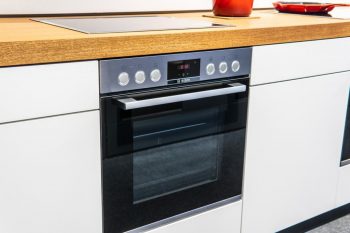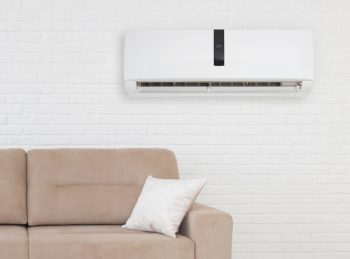
There are few frustrations greater than opening your dishwasher after a cycle, only to find your dishes are still dirty. Even more perplexing is opening the dishwasher door to find it hasn’t filled with water at all. If you’re asking yourself, “Why is my dishwasher not getting water?” you’re not alone. This issue is a common one, but the good news is, it’s often an easy fix.
Your dishwasher may not be getting water due to several reasons including an incorrectly positioned drain hose, an open or unlatched door, a shut-off water supply, a stuck overfill protection float, a clogged or defective water inlet valve, a faulty float switch, or a malfunctioning electronic control unit (ECU). Checking each of these areas should help diagnose the problem. If the issue persists, it’s recommended to contact a professional technician for further diagnosis and repair.
The Importance of Water Supply in a Dishwasher
A dishwasher is a highly efficient appliance that uses hot water and detergent to clean your dishes. The water supply system of a dishwasher works by using a water inlet valve to control the flow of hot water into the appliance. This valve is typically located near the dishwasher’s access panel and is connected to two wires, a hot water supply hose, and an outlet hose. When the dishwasher starts a cycle, the water inlet valve opens, allowing hot water to flow into the dishwasher. If the water inlet valve becomes clogged with debris or develops a leak, the water supply to the dishwasher can be restricted, causing issues with the appliance’s performance.
Common Causes for a Dishwasher Not Getting Water
Several factors can contribute to a dishwasher not filling with water. These range from simple issues, like an incorrectly positioned drain hose or an open door, to more complex problems, like a faulty water inlet valve or a malfunctioning electronic control unit (ECU).
Incorrectly Positioned Drain Hose
The position of the drain hose can affect the water supply to your dishwasher. If the drain hose is not positioned properly, the water that should be filling your dishwasher might be draining out too quickly. Make sure the drain hose is positioned above the water level of the kitchen sink.
Open or Unlatched Door
One of the simplest reasons why your dishwasher may not be filling with water is if the door is not properly closed or latched. The dishwasher will not start a cycle if it detects that the door is not securely closed. Check to ensure that the door is closed and latched properly.
Shut Off Water Supply
Another simple reason could be that the water supply valve is shut off. This valve is usually located under the kitchen sink. Make sure the valve is turned on and that water is flowing into the dishwasher.
Overfill Protection Float Obstruction
The overfill protection float is a safety device designed to prevent the dishwasher from overfilling with water. If this float is stuck in the up (or overflow) position, it can prevent water from entering the dishwasher. Check to ensure that the float is not stuck or obstructed.
Clogged or Defective Water Inlet Valve
The water inlet valve is responsible for controlling the amount of water that enters the dishwasher. If this valve is clogged or defective, it can prevent the dishwasher from filling with water. To check the water inlet valve, you can test it for continuity using a multimeter. If the valve is defective, it will need to be replaced.
Faulty Float Switch
The float switch is another component that helps control the water level in the dishwasher. If this switch is malfunctioning, it may not allow the dishwasher to fill with water. You can test the float switch for continuity using a multimeter to determine if it needs to be replaced.
Malfunctioning Electronic Control
A malfunctioning electronic control unit (ECU) could also be the culprit. The ECU manages various aspects of the dishwasher’s performance. If it’s faulty, it can prevent the dishwasher from filling with water. Diagnosing a faulty ECU can be complex and typically requires professional assistance.
Diagnosing a Dishwasher Not Getting Water
While some of the above issues can be easily diagnosed, others require a more in-depth examination. Here’s how you can troubleshoot a dishwasher not getting water:
- Check the water supply: Ensure that the water supply to your dishwasher is turned on and that there are no kinks or obstructions in the supply line.
- Inspect the float switch and overfill protection float: These components regulate the water level in your dishwasher. Ensure they are functioning properly and not stuck in the “off” position.
- Examine the water inlet valve: This valve controls the flow of water into your dishwasher. If it’s clogged or defective, it will prevent water from entering the appliance.
- Check the door switch: This switch ensures that the dishwasher only operates when the door is properly closed. If it’s malfunctioning, the dishwasher may not fill with water.
If you’ve tried these steps and your dishwasher is still not getting water, it’s recommended to contact a professional technician for further diagnosis and repair.
Preventive Measures
To avoid future issues with your dishwasher not filling with water, consider the following preventive measures:
- Regularly clean the dishwasher filter to prevent clogs.
- Ensure the water supply valve is always turned on.
- Regularly check the water inlet valve for clogs or leaks.
- Make sure the dishwasher door is always securely closed and latched before starting a cycle.
Understanding the various components involved in your dishwasher’s water supply and how to troubleshoot common issues can help you keep your dishwasher running smoothly. However, if you’re ever in doubt, don’t hesitate to reach out to a professional for help.
Frequently Asked Questions
How often should I clean the dishwasher filter to prevent clogs?
It’s recommended to clean your dishwasher filter once a month to prevent clogs and maintain optimal performance.
How do I know if my water inlet valve is clogged?
If your dishwasher is not getting enough water or no water at all, it may be due to a clogged water inlet valve. You can inspect the valve for any visual signs of clogs or debris. If it’s severely clogged, it may need to be replaced.
What is the function of the float switch in a dishwasher?
The float switch in a dishwasher is a safety device that prevents the dishwasher from overfilling with water. When the water reaches a certain level, the float switch is triggered and the water inlet valve is shut off.
How can I tell if my dishwasher door is not latching properly?
If your dishwasher door is not latching properly, the dishwasher might not start a cycle or it may stop mid-cycle. Check for any obstructions that might prevent the door from closing securely, and make sure the latch is not damaged or broken.
What should I do if my dishwasher’s electronic control unit (ECU) is faulty?
If you suspect that your dishwasher’s ECU is faulty, it’s recommended to contact a professional technician. Diagnosing and repairing a faulty ECU can be complex and requires professional expertise.











